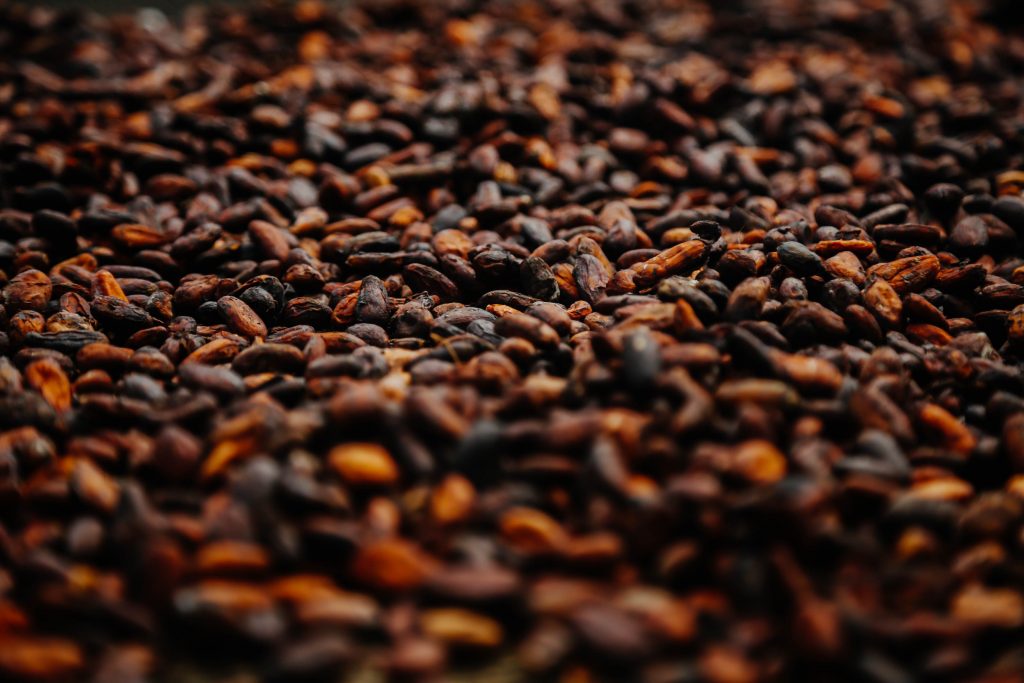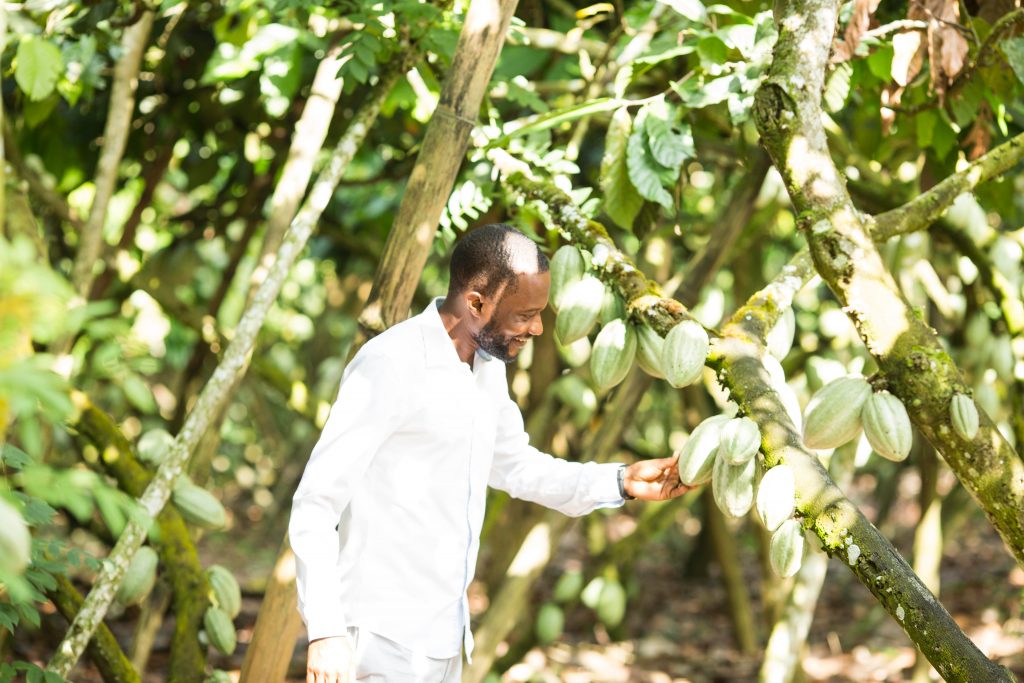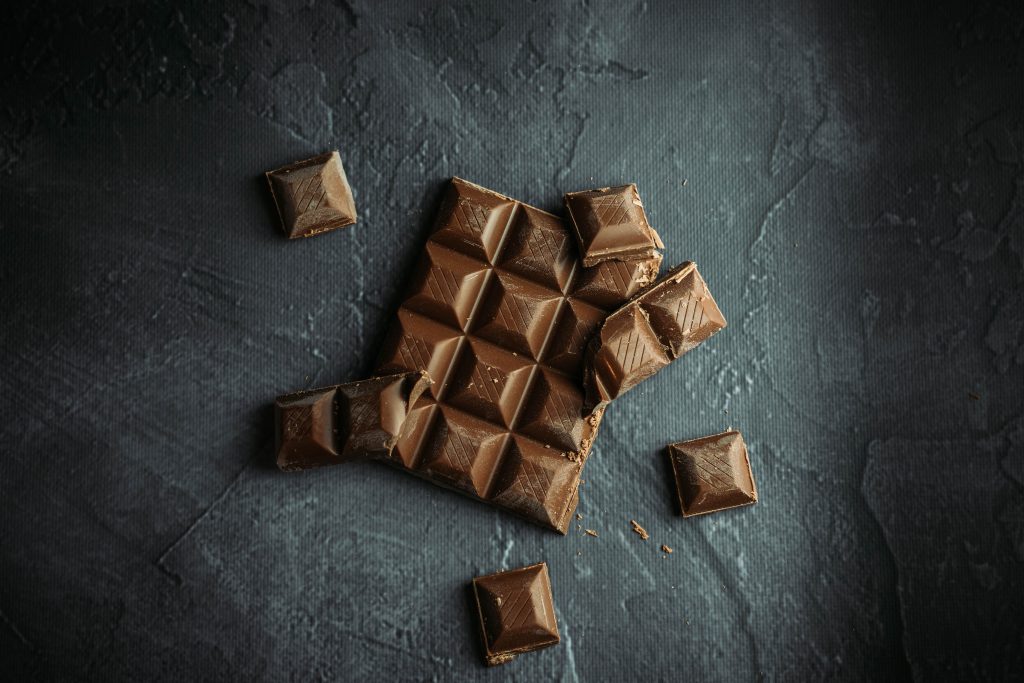Cocoa is easily one of the most fascinating fruits in the world. It is been developed as a crop for about 3,500 years, or maybe even for longer than 5,000 years. The confusion? Well, it was long thought that it was the Olmecs, an ancient civilization in Mexico, who around 1,500 B.C. first realized the cocoa fruit was edible by observing rats eating the fruit. However, studies of discovered traces of cocoa on ancient pots over the last few years suggest it all started in the rainforests of what is now Ecuador as long as 5,300 years ago – shifting the origins from Central America to the upper Amazon. At any rate, we’re pretty sure one of the two continents of the Americas is where this story begins.
In Europe, the history of coffee starts in the first half of the 16th century, when Spanish conquistador Fernando Cortez brought a large batch of cocoa beans to Europe in 1528, where it would soon become highly popular. In 1753, it was Swedish botanist, physician, and zoologist Carl Linnaeus who named the cocoa tree as Theobroma cocoa. And in the 19th century, it was a Dutch chemist named Coenraad Johannes van Houten who became known for the treatment of cocoa mass with salts to remove the bitter taste, resulting in what is still called “Dutch process chocolate”.
Now, it might seem weird starting off a listicle (an article that is structured as a list) by sharing several interesting facts ahead of the actual list, but there’s just so much good stuff to share about chocolate that we thought we might as well get a head start. Anyway, here are 10 interesting facts about chocolate, cocoa and the cocoa tree!
1. We’ve been eating the products of the cocoa tree for well over 50 centuries
We’ve stated in the introduction that cocoa was discovered 5,300 years ago, but not too much is known about those origins. That’s because it’s a rather recent finding: three independent lines of archaeological evidence—cacao starch grains, absorbed theobromine residues and ancient DNA—dating from approximately 5,300 years ago where recovered from the Santa Ana-La Florida site in southeast Ecuador not too long ago, in 2018. These finding are currently the earliest evidence of use of ‘Theobroma cocoa’, the cocoa tree.
What we know of the use by the Olmecs, the earliest known major Mesoamerican civilization, is that they realized the potential of the cocoa fruit too, at around 1,500 B.C. In the early stages, the cocoa was crushed and mixed with water and spices and consumed as a beverage. The Mayans and Aztecs quickly adopted the cocoa beverage and also developed effective methods of cultivating cocoa beans.
Interestingly, they also used the beans also as a measuring unit and as a form of currency. Indeed, the cacao bean was so significant to the local cultures that it was used as a currency in trade, given to warriors as a post-battle reward, and served at royal feasts. The value of cocoa as a means of payment was enormous: a rabbit cost 10 beans at the time and you could buy a turkey for 100 beans. The Aztec Emperor Moctezuma II made his people pay taxes with a certain amount of cocoa beans. “Money almonds” is what the Spaniards called the cocoa beans in the treasure rooms of Emperor Montezuma.
Cocoa beans are the dried and fermented seeds of Theobroma cacao. Processing cocoa beans delivers cocoa powder and cocoa butter, which are both ingredients for chocolate. But that’s not for several thousand years later…

2. Cocoa powder and butter were discovered in 1828
It seems a long while from 1,500 B.C. to the year 1828, but here we are. In the laboratory of a Dutchman, no less: Casparus van Houten. Rings a bell? That’s because we mentioned Coenraad Johannes van Houten in the introduction; his son. While Coenraad is in fact known for the treatment that led to Dutch process chocolate, it was his father before him who discovered how the fat could be removed from the beans using potassium hydroxide. Cocoa mass, butter and powder became important ingredients for chocolate products.
While Belgium and Switzerland are probably better known for their quality chocolates – and correctly so – it was Van Houten’s introduction of cocoa powder that not only made creating chocolate drinks much easier, but also made it possible to combine the powder with sugar and remix it with cocoa butter to create a solid, already closely resembling today’s eating chocolate. Van Houten Jr. introduced further improvement by treating the powder with alkaline salts (potassium or sodium carbonates), so that it would mix more easily with water. Today, this process is known as “Dutching”. The final product, Dutch chocolate, has a dark color and a mild taste.
In 1838, the Van Houten patent expired, enabling others to produce cocoa powder and start experimenting to make new chocolate products. For instance, in 1847, English chocolate maker J. S. Fry & Sons produced arguably the first chocolate bar. Milk chocolate was introduced by Daniel Peter in Switzerland in 1875, while Rodolphe Lindt made chocolate more blendable by the process of conching in 1879.
3. The word ‘chocolate’ comes from the Nahuatl language
We’ve now established that use of the cocoa tree has its origins in South-America rather than what is now Mexico, but we still have to thank the latter region for giving us the word chocolate. That’s because ‘chocolate’ originates from the Nahuatl tongue.
Nahuatl is a language, or rather a group of languages, of the Uto-Aztecan language family. The Nahua are a group of indigenous people of Mexico, El Salvador, Guatemala, Honduras, and Nicaragua. In Mexico, they comprise the largest indigenous group. Nahuatl was also the language of the Aztec/Mexica, while varieties of the language are still spoken by about 1.7 million Nahua peoples, most of whom live in Central Mexico.
Back to the etymology of the word. Chocolate stems from not one, but two Nahuatl words: ‘chocolatl’ – which translated literally means “hot water” – and ‘cacahuatl’, which referred to a bitter beverage made with cocoa that was shared during religious ceremonies. If we’re reading that correctly, ‘hot chocolate’ is a bit of a tautology…?
4. Amsterdam is the world’s largest cocoa port
We weren’t planning on waving our Dutch flags here at Agiboo, but there is however a second cocoa-fact that relates to our heritage. While the Dutch are known worldwide as seafarers, they have as such also played a major role in cocoa trade in history. We only mention that because Amsterdam is still the most important world port for cocoa trade. Together with Zaanstad, it is the largest cocoa cluster in the world.
In fact, just last spring, a record shipment was brought in – the single largest shipment of cocoa beans ever to arrive in the port of Amsterdam. The ship, from Ghana, was unloaded in a few days and the beans were stored – all 22,300 tons of them.
As the weight of a cacao bean can vary by more than an order of magnitude from below 0,5 grams to maybe 5 grams each, that’s anywhere between 4,5 and 45 billion beans(!).
5. Ivory Coast, Ghana and Indonesia are among the real stars of the industry
Enough of our biased history lesson of the Dutch and their involvement, let’s go to the real heroes of the cocoa industry. Because whatever it is chemists in the Netherlands and England or masters in Belgium, Switzerland and Austria do, you can’t have chocolate without cocoa beans. And cocoa beans aren’t from Europe, even if the top four countries responsible for the production of the world’s chocolate are Germany, Belgium, Italy, and Poland (with about 40 percent of total global export!).
Cocoa beans are produced in areas close to the equator in wet, tropical climates. The fruits or pods of a cocoa tree have a unique characteristic as they grow directly from the trunk or large branches of the tree in comparison to most fruits, which grow at the end of branches.
Cocoa production is a highly labor-intensive process. The entire production cycle is performed by hand and the majority of farms are family owned businesses. Worldwide production is almost exclusively performed on small farms, no bigger than 12 acres. The three biggest producing nations are Ivory Coast, Ghana and Indonesia. The first two account for over half of total global production. In their footsteps are the likes of Nigeria, Cameroon, Brazil and Ecuador, while honorable mention goes to countries like Uganda, Madagascar and Peru, where amazing cocoa is produces as well.

6. A cocoa tree can grow up to 15 meters
Here’s an astonishing fact: cocoa trees in the wild can reach up to 15 meters. However, for cultivation on farms and estates, they are usually kept at a height of 4 to 10 meters to protect them for strong winds. It’s also more convenient to reap harvest from smaller trees.
The flowers of the cocoa tree grow directly on the trunk, are about the size of an olive and have different colors. They can be either white or rose, yellow or red and are in fact very beautiful to see. The tree begins to bloom when it is about 4 years old and continues to bloom all year round. But even though the tree has been blooming for so long, it only delivers 30 to 40 fruits per year. The pods of the cocoa tree change color during their ripening process and when they turn yellow or orange, they are ready to be harvested.
A single tree can be harvested at various times as the pods will not ripen at the same time. The trees are therefore checked numerous times during harvest time to determine each pod separately. This is also the reason the harvest is performed by hand, as machines are not able to determine which pods are ready for harvesting.
The workers use a large knife attached to a pole to cut the pods from the tree. The beans are then cut open with a machete and the beans and pulp are separated from the waste and laid out onto grates for several days, to undergo a process called ‘sweating’, which enables the pulp to liquefy through fermentation.
7. Fermentation is critical to the quality of the cocoa beans
Fermentation is when the liquefied pulp slowly drips of the beans and leaves the beans ready for further processing. It is an essential factor for the quality, as this chemical process alters the eventual flavor of the beans. The next step is the drying of the beans. This is commonly performed by placing the beans on a bamboo mat and letting the sun dry them for several days. In rainy climates the beans are dried indoors, sometimes with artificial hot air. This is less desirable as it may cause issues with the quality. During the drying process, the beans are shuffled multiple times to enhance the drying process and quality of the beans. When the beans are completely dried, they will be ready for transport.
8. The cocoa industry is more and more involved in sustainability…
In the cocoa chain, increasing attention is being paid to sustainability. This is reflected, among other things, in the sustainability of the production conditions of the cocoa farmers themselves. UTZ is a certification program for sustainable farming of, among others, cocoa.
UTZ certification shows consumers that products have been sourced, from farm to shop shelf, in a sustainable manner. To become certified, all UTZ suppliers have to follow our Code of Conduct, which offers expert guidance on better farming methods, working conditions and care for nature. This in turn leads to better production, a better environment and a better life for everyone.
9. …and did you know you can take part too?
In 2011, there was an idea. An idea rooted in values like sharing, rewarding and giving recognition where recognition is due. It was an idea inspired by meetings with cocoa farmers from Africa and Latin America, who carry the heavy loads so we get to enjoy the fruits of their labor. In 2020, the year more known for halting developments rather than propagating them, that idea came to fruition: meet Treegether, the platform that gives meaning to cocoa farming and aims to bring personal recognition to farmers and producers by allowing consumers to sponsor their very own cocoa tree.
Read more about Treegether or visit treegether.com and order delicious chocolate from your very own tree today. The cocoa from your tree will be carefully processed in small batches, which are converted into exquisite chocolates by Treegether’s Swiss master!

10. Agiblocks is a true cocoa solution
Is this an interesting fact, or just a shameless plug? Either way, our flagship CTRM software is the go-to solution if the trade of cocoa is your game. While Agiblocks is a strong contender across many commodities, it is extremely strong in terms of meeting the specific requirements of our four ‘specialized commodities’ – cocoa being one of them.
Agiblocks provides all of the functionalities that are specific to cocoa and the cocoa trade. Our approach of providing pre-configured versions of Agiblocks for commodities like cocoa is really paying off, as it allows smaller businesses to implement faster and more cheaply by reducing implementation complexity. In the words of Erik van der Flier, managing director of Agroforce: “Cocoa is a very peculiar, very specific product. In my opinion, Agiboo is the one brand that has captured the challenges of our industry to best approach our daily tasks and operations as commodity traders.” You can read the full interview here.
